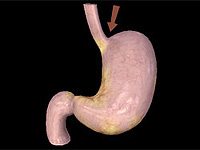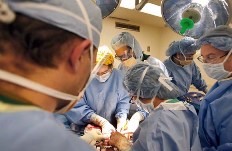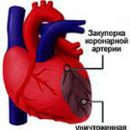Lung cancer - symptoms, causes, diagnosis, treatment and prevention
Content
- What is lung cancer
- Lungs' cancer — causes
- Other reasons for the development of lung cancer
- Lungs' cancer — Symptoms
- Light cancer stages
- Light cancer diagnosis
- Lungs' cancer — treatment
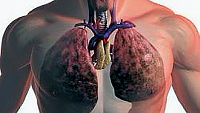 Lungs' cancer — the most common oncological disease worldwide. According to 2012, 1.82 million new cases were revealed. 1.56 million people became a victim of illness. Every 3–4 million rounded cigarettes are equal to the death of one smoker due to cancer.
Lungs' cancer — the most common oncological disease worldwide. According to 2012, 1.82 million new cases were revealed. 1.56 million people became a victim of illness. Every 3–4 million rounded cigarettes are equal to the death of one smoker due to cancer.
What is lung cancer
Lungs' cancer — Malignant tumor emanating from bronchial mucosa. Tumors originating from epithelial tissue are called cancer.
The incidence of lung cancer
In the Russian Federation, according to WHO, the incidence of cancer is 30–40 per 100 thousand. Population. There is a tendency to increase incidence.
Basically, the disease is diagnosed in smokers, at the age of 50 years. Over the past decades, mortality from lung cancer in women began to catch up with the figures in men.
Lungs' cancer — causes
As indicated, the main reason leading to the occurrence of the disease is considered tobacocuria. This is confirmed by numerous studies and statistics.
In tobacco smoke contains 73 substances known as carcinogens and poisons. Including benzopire, radon, nitrosamine, polonium. Nicotine aggravates the situation, suppressing the immune system, reducing the ability of the body to fight cancer.
90% of cases caused by smoking. The risk of lung cancer in smokers above 13 times compared with non-smoking persons.
Passive smoking also leads to lung cancer and is the cause of the death of thousands of non-smoking people. It has been proven that the risk of disease in people living with a smokers, above 30%.
If smoking is refusing smoking, the risk of lung cancer is gradually decreasing.
Other reasons for the development of lung cancer
These include harmful environmental factors, chemicals, viral infections. Of great importance is air pollution. In industrial areas, the incidence of lung cancer above.
Lungs' cancer — Symptoms
Lung cancer symptoms:
- cough, isolation of sputum with blood admixture, breathing difficulty, shortness of breath;
- inexplicable weakness, weight loss;
- Pain in chest, difficulty swallowing, bone pain;
- Neurological symptoms in germination of large branches of the sympathetic nervous system, a wandering nerve.
When metastasis, other symptoms may be detected. Cancer lungs most often metastasis in the brain, liver, bones, kidneys and adrenal glands.
The first sign of lung cancer in some cases — Sudden intolerance tobacco smoke, harsh smoking.
Light cancer stages
The stages of lung cancer are classified depending on the size and availability of remote metastases. Stage is important prognostic value. So, 80% of patients with 1 stage of the disease live to a 5-year boundary. Without treatment in a couple of years, the disease kills almost 90% of the ill. The following stages of the disease are distinguished:
- lungs' cancer — 1 Stage: Tumor less than 3 cm, without metastases;
- lungs' cancer — 2 Stage: Tumor up to 6 cm, metastases in local lymph nodes;
- lungs' cancer — 3 Stage: The tumor is more than 6 cm, the neighboring shares, bronchi sprouts. Metastases in the lymph nodes of the mediastinum;
- lungs' cancer — 4 Stage: The tumor germinates outside the lungs, metastases in remote organs.
Combined treatment significantly improves the forecast. The presence of remote metastases worsens survival rate.
Light cancer diagnosis
Basic methods for diagnosing lung cancer:
- Screening method — fluorography;
- Radiography of the chest;
- Computed tomography, positron emission tomography, NMR — tomography;
- bronchoscopy, endoscopic biopsy;
- Ultrasound.
In recent years, the method of detecting tumor markers in the patient's blood is widely applied. With their help, you can diagnose the disease, determine the type of tumor, make a forecast, correction of treatment.
An immunohistochemical analysis method has an increasing importance in the diagnosis and treatment of oncological diseases. Determination of expression of certain genes has an important prognostic value.
Lungs' cancer — treatment
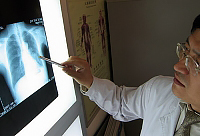 Historically, the treatment of lung cancer is carried out surgically. However, this method is effective only at the initial stages of the disease. After the operational removal of the tumor is high, the frequency of development of recurrences.
Historically, the treatment of lung cancer is carried out surgically. However, this method is effective only at the initial stages of the disease. After the operational removal of the tumor is high, the frequency of development of recurrences.
For this reason, today the most correct and efficient method is considered combined treatment.
Sequential use of surgical removal of tumor, radiation therapy, chemotherapy gives the best results. Operational intervention is not permissible for all patients. Launched lighter cases are treated with chemistry and radiation therapy.
Lung cancer, depending on histological type, is poorly amenable to chemotherapeutic treatment.



